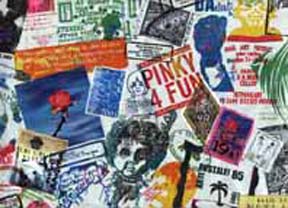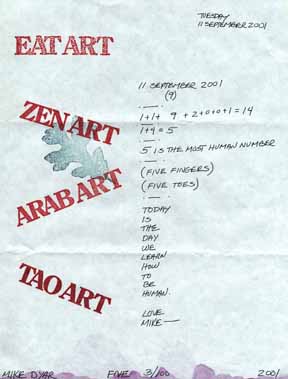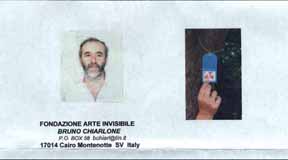Mail art
Mail Art is more and more considered an artistic movement which uses the mail to produce and spread Art. The mail is the basic concept on which the mail-Artists create their works.
Mail-Art was born on 1st October 1869, when the Royal Austrian Mail issued the very first post card (Corrispondenz Karte). This new means of communication did not allow to write down long messages but let short messages be matched to the image printed on the card…that meant a real revolution in the way of using the mail.
The art of the late XIX Century was concerned about the future of Mankind, on the new scientific innovations and on the great industrial development. So it dealt with a changing World which would lead, in the following Century, to face the great human and social dilemmas like the World conflicts, the use of nuclear energy, the standardization of Society, Consumerism, solitude, incommunicability.
In such a different Society from that of the past, Art is stimulated to explore the new languages and the innovative expressive means. The use of the mail is very well inserted in this new context.
Forerunners of Mail Art can be found in the actions of the Futurist Movement (postal cards of Balla, Marinetti, Congiullo and others…) as well as in those of the Dadaist Movement (creations by Marcel Duchamp). Guillaume Apollinaire, too, contributes to develop this new means of expression with his “Calligrammes”, poetic inventions in which words create images. All these first experiences are still unaware of the big potential they contain. Only in the Sixties, Ray Johnson, an eccentric American Artist belonging to Fluxus Movement, realizes that it is possible to turn the postal communication in an independent expressive form. His idea consists in sending his own works to other artists all over the World suggesting them to swap works of art by mail, in which the envelopes, the stamps are part of the work.
This project was really successful and let Ray Johnson to found the "New York Correspondence School of Art” (parody of the "New York School of Abstract Expressionist Correspondence”), in which he collected all the works from all over the World. Thus, the modern Mail-Art was born, a proper network capable to generate a worldwide chain of contacts where the Artist is finally unbound from the rules of the market and he is free to show, express and spread his creativity everywhere. A recent and important evolution of Mail-Art is E-Mail-Art, made with the latest artistic technologies and widespread through the web. But it cannot be classified as “Mail-Art” as the use of the computer makes it belong to what is called Digital-Art.
Day by day, Mail-Art has developed different areas of research like the book of the artist, the review, the writing of letters, the visual poetry, the artistic stamp, the audio and video production and little art objects. This differentiation has not affected the Artist’s creative-expressive freedom at all.
The only limits are the rule of the postal system. Thanks to the mail, Art does not know boundaries limits, shortens the ideological and cultural distances and becomes a dynamic element of recovery and promotion of what is local, in the effort of avoid a complete disintegration and flattening of the different and diverse realities. Correspondence among Artists from different Countries also lets to get in touch with one another and to collaborate to the organization of very peculiar international Exhibitions on specific themes which often deal with nowadays’ social problems and which let visual messages to be spread respecting the artistic freedom and the no-profit attitude to life.
In the last decades, the great success of such events meant the creation of proper archives containing all the documents regarding a great variety of projects. But the lack of specialized areas to collect the Mail-Art works, to promote Exhibitions, conferences and events is still a problem.










